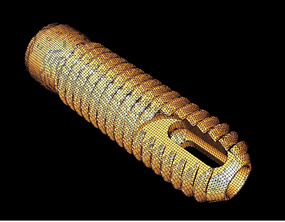Boundary layer
Boundary layers can be created on a per part basis.
Controls
The visibility of Parts mapbe turned on/off. Only visible parts are meshed. This is useful when studying the effects of changes in geometry.
Stretched hexas
Harpoon allows the hexas to be stretched in X, Y or Z. This can give a dramatic reduction in the number of cells required.
Refinement
Refinement regions (boxes/spheres/trapezoids) can be used to control the volume size in specific regions.
Expansion
Harpoon offers global slow or quick expansion rates from one hexa level to another. Expansion of more than 2-1 never occurs. A more complex expansion is possible from any part, which penetrates the volume much more. This is useful for leading edges of wings, for example.
Hanging nodes
Harpoon produces hanging nodes but these can be removed for those solvers that do not support them.
Mesh types
Body-fitted hex dominant, body-fitted 100 percent tet and cartesian
Mesh regions
Harpoon can mesh internally, externally or all regions
Batch
Harpoon may be run in batch mode.
Volume management
Different regions of elements can be grouped into volumes which can then be edited on a macroscopic scale. Volumes can be deleted or merged, and any individual elements affected will be updated accordingly. Similarly, surface meshes can be merged together.
|
|
Wrapping
Dirty geometry can be wrapped. this is useful to do where
large holes are in the input geometry.
The reulsting surface mesh could then be
reused as input to get a volume mesh
Cell Count Reduction
After meshing, individual volumes may be coarsened in
the X, Y or Z directions. This can give
a 10%-40% reduction in cell count.
Surfaces
Surfaces may be merged or renamed
Mesh smoothing
Harpoon gives users the ability to smooth generated meshes to a specified quality criterion. Some solvers struggle with extremely skewed elements, so the user has the option of specifying a limit to the ‘skewness’ of the cells.
Cell quality control
Harpoon can be used to highlight which individual cells are of poor quality. Users can then interactively move the nodes of problem cells and see how this affects the quality of the cell and those around it.
Leak detection
In a mesh that may contain millions of cells it can be extremely difficult to locate missing elements or ‘leaks’. Any leaks will play havoc with solvers so it is vital to find them. Harpoon can find these by a proprietary scanning method which displays the route taken through problem holes. Sprayshop
Take your geometry into the sprayshop and adjust the levels interactively.
This gives the user extreme control of the
mesh setup Compact
Mesh
It is possible to compact the mesh to reduce the RAM required
before saving or creating Boundary Layers.
|

